How to Grow Fruit Trees at Home: Container Gardening
- September 26, 2024
- 0 comment
Have you ever dreamed of growing your own fruit trees but lack the space for a garden? Many people face this challenge, especially those living in urban areas or apartments.
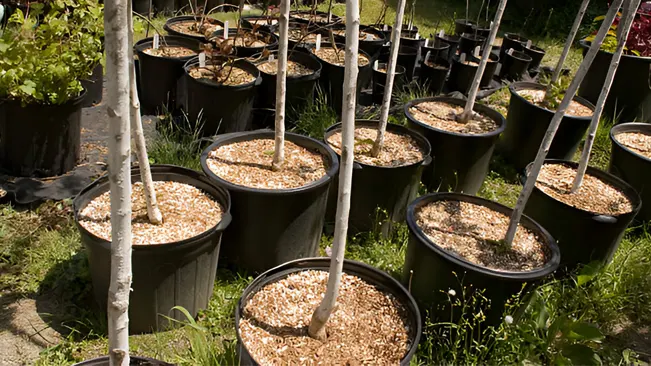
The good news is that fruit trees can thrive in containers with the right approach. But how exactly do you get started, and what factors should you consider to ensure success?
What Does It Mean to Grow Fruit Trees in Containers?
Growing fruit trees in containers involves planting and nurturing fruit-bearing trees in pots or other confined spaces, as opposed to traditional ground planting. This method offers flexibility, allowing you to cultivate trees on patios, balconies, or in small courtyards. However, container gardening comes with specific challenges, such as limited root space and the need for frequent watering and fertilization.
Factors Affecting the Growth of Fruit Trees in Containers
Several important factors determine whether your container-grown fruit trees will thrive. Understanding and addressing these factors is crucial for long-term success.
Container Size
The size of the container directly impacts the health of your fruit tree. A pot that’s too small will restrict root growth, leading to stunted trees. For most fruit trees, a pot with a minimum of 15-20 gallons is recommended. For dwarf varieties, 10-15 gallons may suffice. Ensure the container has drainage holes to prevent root rot.

Soil Quality
Regular garden soil is not suitable for container-grown trees. Use a high-quality potting mix that’s well-draining but can retain some moisture. A mix containing perlite or vermiculite is ideal. You can also add compost for additional nutrients.
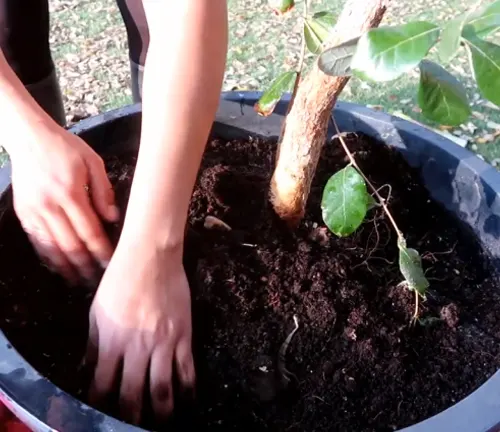
Sunlight
Like most plants, fruit trees need plenty of sunlight to produce fruit. Place the containers in a spot that receives at least 6-8 hours of direct sunlight daily. South-facing areas are usually best for sun exposure.
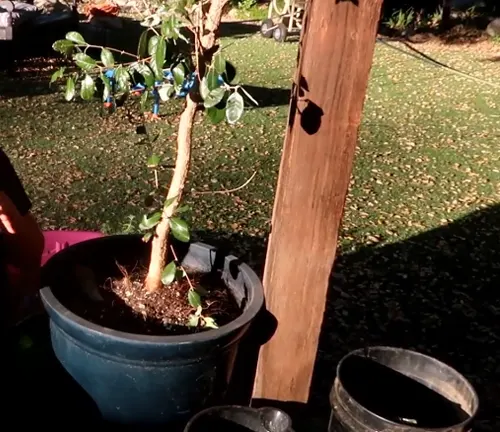
Watering
Container-grown trees dry out faster than those planted in the ground, so regular watering is essential. The soil should remain consistently moist but not waterlogged. During hotter months, you may need to water your tree daily or even twice a day. To check if your tree needs water, insert a finger into the soil; if it’s dry an inch below the surface, it’s time to water.

Fertilization
Nutrients in containers get used up quickly, so feeding your tree with the right fertilizer is key. Opt for a balanced, slow-release fertilizer in spring and follow up with additional feedings during the growing season. Fruit trees benefit from extra nitrogen, especially during their early growth stages.
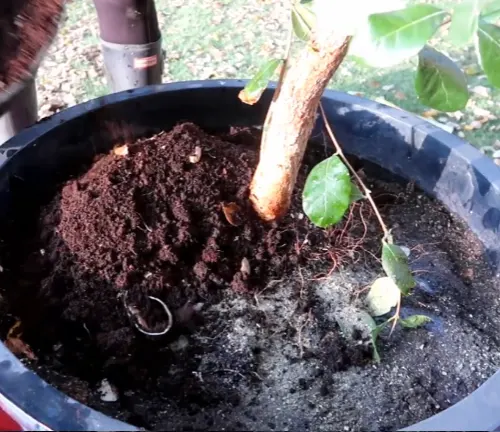
Types of Fruit Trees Suitable for Containers
Not all fruit trees are well-suited for container growth. However, several types of trees, particularly dwarf or semi-dwarf varieties, thrive in pots and containers.
- Citrus Trees: Dwarf varieties of lemon, lime, and orange trees are popular choices for container gardening. They adapt well to limited root space and can even be brought indoors during colder months.
- Apple Trees: Dwarf apple trees are another good option for containers. Varieties such as ‘Fuji’ or ‘Granny Smith’ are grafted onto dwarf rootstocks, allowing them to grow well in smaller spaces without sacrificing fruit quality.
- Fig Trees: Fig trees, especially varieties like ‘Brown Turkey’ or ‘Celeste,’ are highly adaptable to containers. They have shallow root systems and can produce abundant fruit in a sunny location.
- Stone Fruit Trees: Peaches, plums, and cherries are also suitable for container growth, provided you select dwarf varieties. These trees require more care in terms of pruning but can produce excellent yields.
- Olive Trees: Dwarf olive trees are a less common, but excellent choice for container planting. They are hardy, tolerate drought, and produce olives when grown in optimal conditions.
Practical Tips for Growing Fruit Trees in Containers
Successfully growing fruit trees in containers requires some attention to detail and regular care. Here are some practical tips to help you along the way:
- Choose the Right Container Material: Clay or ceramic pots are heavy and sturdy but may dry out faster than plastic containers. Plastic is lighter, which is helpful if you need to move the pot, but it might retain too much water. Wood barrels can also work well, but they may break down over time.
- Pruning: Pruning is essential for keeping your tree manageable and productive. Regular pruning encourages better air circulation, prevents disease, and keeps the tree’s size in check. For most container fruit trees, prune in late winter before new growth starts.
- Repotting: As your tree grows, it may outgrow its container. Repot the tree into a larger container every 2-3 years to give the roots more space. When repotting, gently loosen the roots to encourage new growth, and add fresh potting mix.
- Winter Care: In colder climates, container-grown trees may need protection from frost. Move them indoors or into a sheltered area when temperatures drop. Alternatively, wrap the container in insulating materials like burlap to keep the roots from freezing.
- Pollination: Some fruit trees require cross-pollination from another tree to produce fruit, while others are self-pollinating. Make sure to research your tree’s pollination needs before planting. For example, some apple and pear varieties need a compatible pollinator tree nearby, whereas most citrus trees are self-pollinating.
Conclusion
Growing fruit trees in containers can be incredibly rewarding, especially for gardeners with limited space. The keys to success include selecting the right container size, using proper soil, ensuring adequate sunlight, and providing consistent watering and fertilization. Additionally, choosing the right tree variety and practicing regular pruning will help your container-grown fruit tree thrive for years to come.
Frequently Asked Questions (FAQ)
- Can all fruit trees be grown in containers?
Not all fruit trees are suited for container growing. Dwarf or semi-dwarf varieties, such as citrus, fig, apple, and stone fruit trees, are the best options. Larger, standard-sized trees require more root space and may not thrive in containers. - How big should the container be for a fruit tree?
The container should be at least 15-20 gallons in size for most fruit trees. Dwarf varieties may do well in slightly smaller pots, around 10-15 gallons. Larger containers allow for better root growth and water retention. - How often should I water a fruit tree in a container?
Watering needs depend on the tree, weather, and container size. In general, water when the top inch of soil feels dry. During hot weather, you may need to water daily, while cooler seasons might require less frequent watering. - What type of soil is best for fruit trees in containers?
Use a high-quality, well-draining potting mix designed for containers. Avoid regular garden soil, which can compact in pots. Mix in perlite or vermiculite for better aeration and water retention. - Do container-grown fruit trees need fertilizer?
Yes, container-grown trees need regular fertilization, as nutrients are quickly depleted. Use a balanced, slow-release fertilizer in the spring and supplement with additional feedings throughout the growing season. - Can I grow fruit trees in containers indoors?
Some fruit trees, like dwarf citrus trees, can be grown indoors if placed near a bright, sunny window. They need at least 6-8 hours of sunlight or supplemental grow lights to thrive indoors. - How often should I repot a fruit tree in a container?
You should repot your fruit tree every 2-3 years, or when it becomes root-bound. Move the tree to a slightly larger container and refresh the potting soil to provide nutrients and more space for root growth.
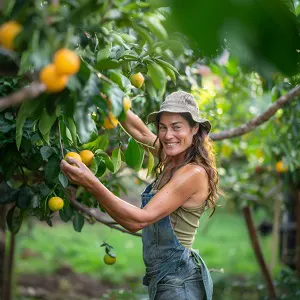
Emma Hudson
Forestry AuthorEmma's experience in farming shapes her detailed guides on gardening and farming tools, providing practical, actionable advice grounded in real-world experience. Her work targets both newcomers and experienced farmers, aiming to enhance their practices with a mix of traditional wisdom and modern techniques. By making complex agricultural concepts accessible, Emma's guides serve as valuable tools for those navigating the challenges of contemporary farming, offering strategies for sustainable success.

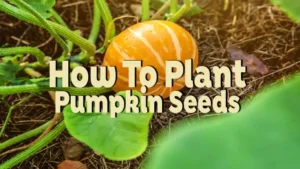
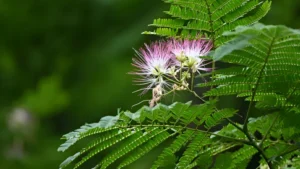

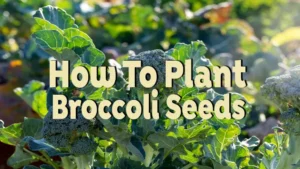





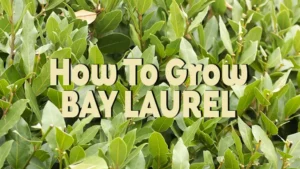


Leave your comment